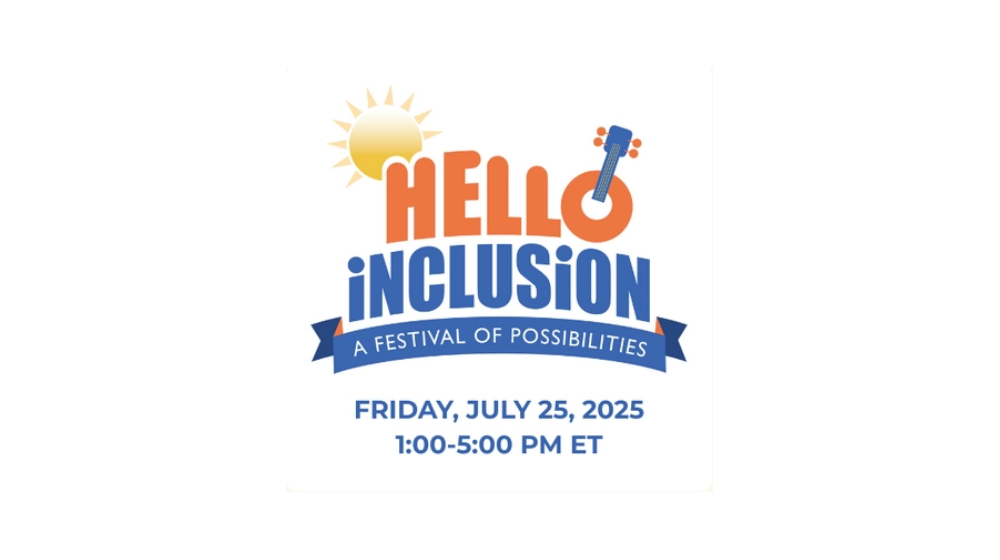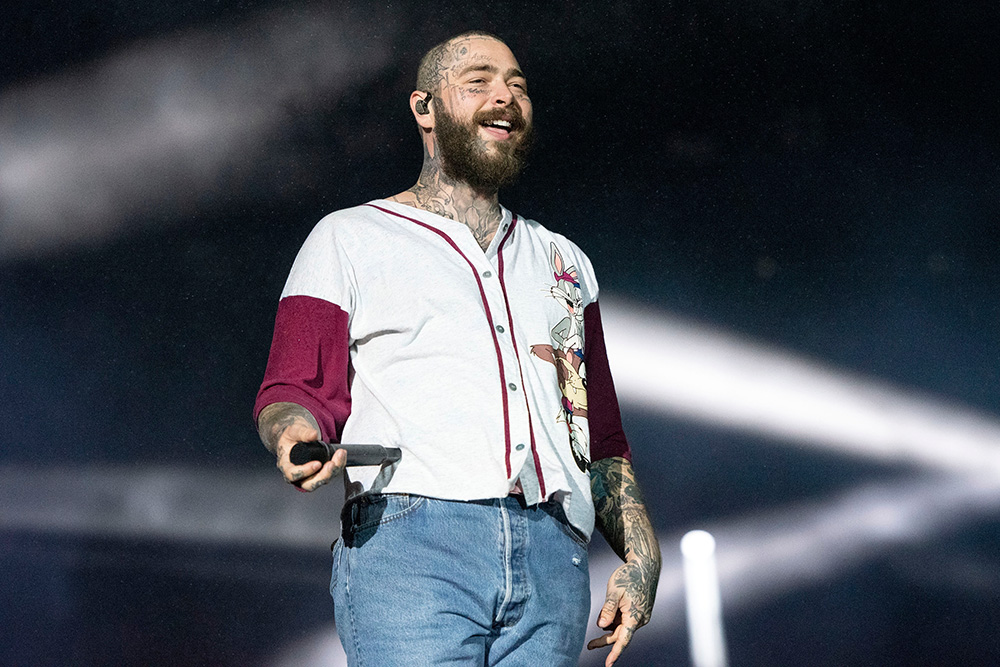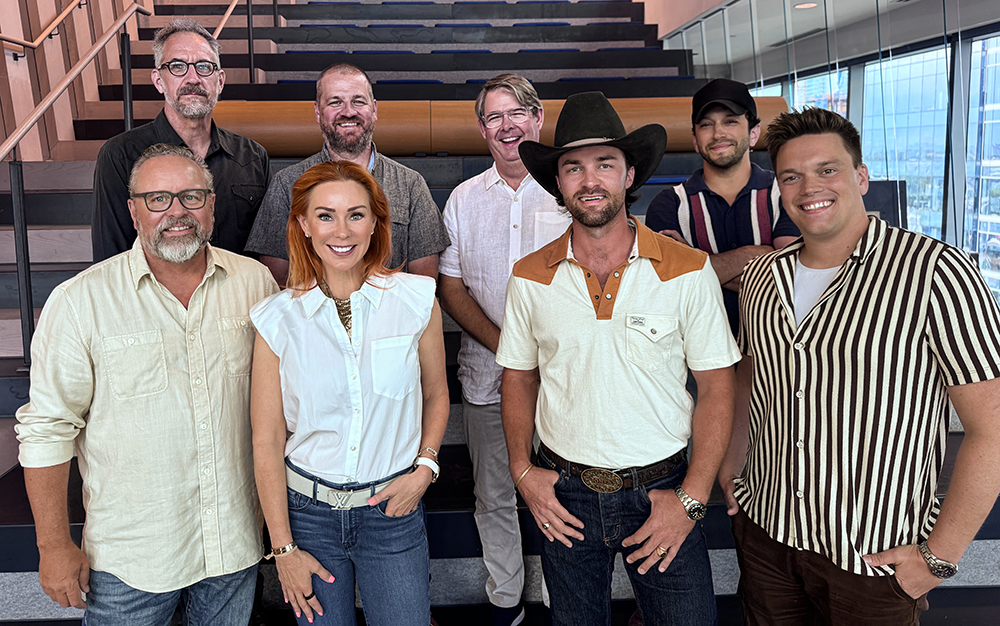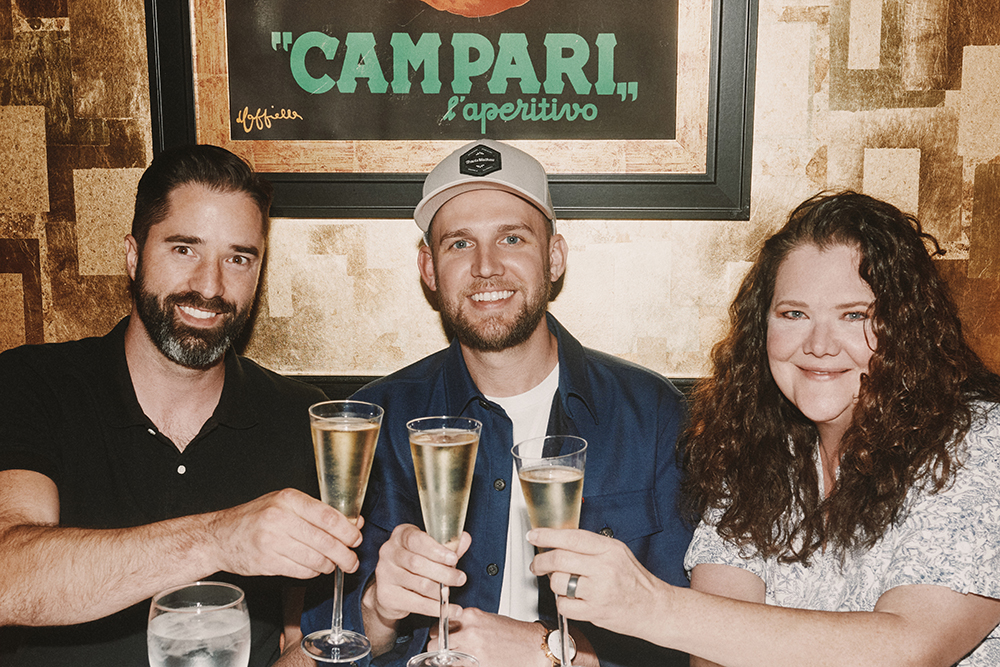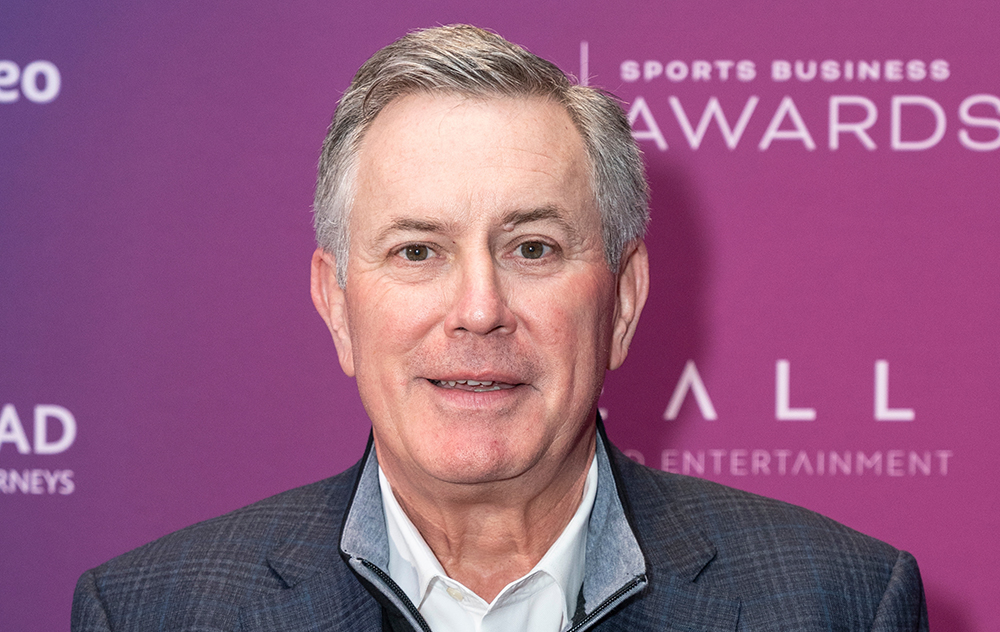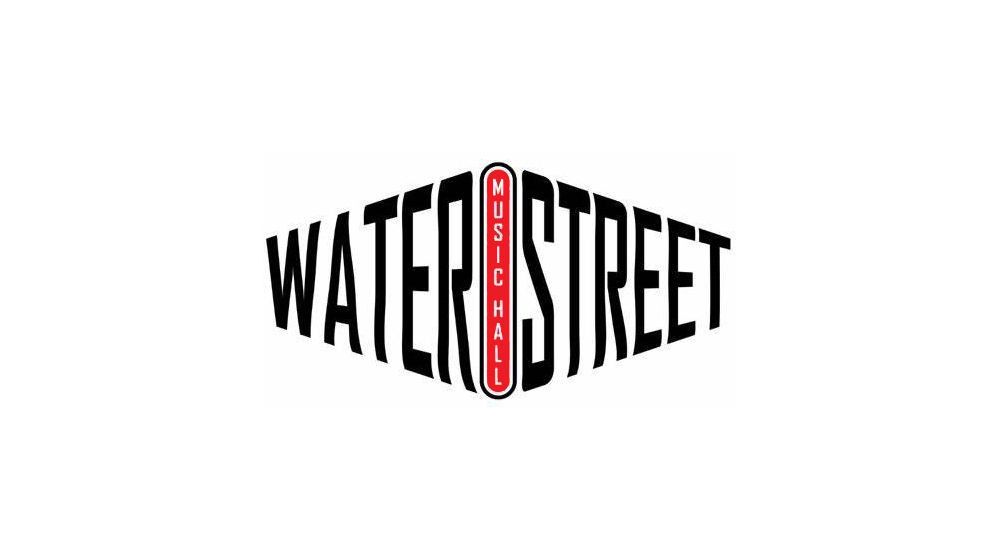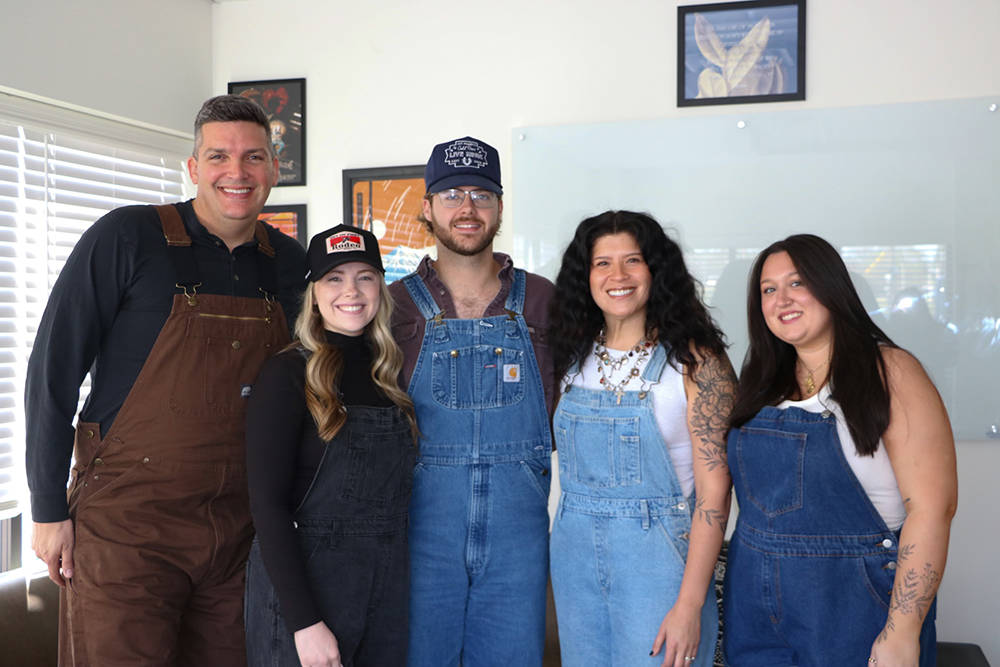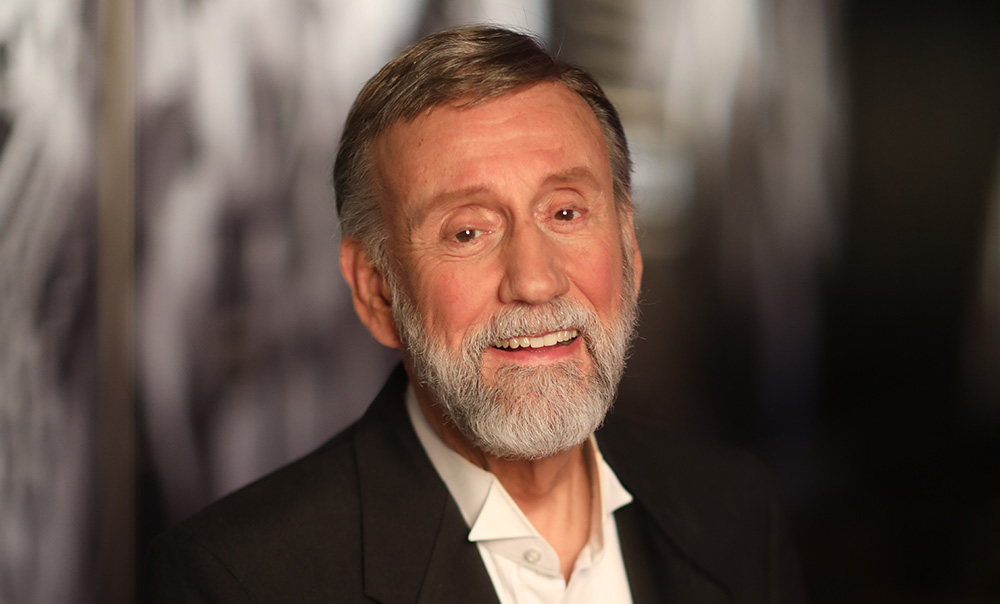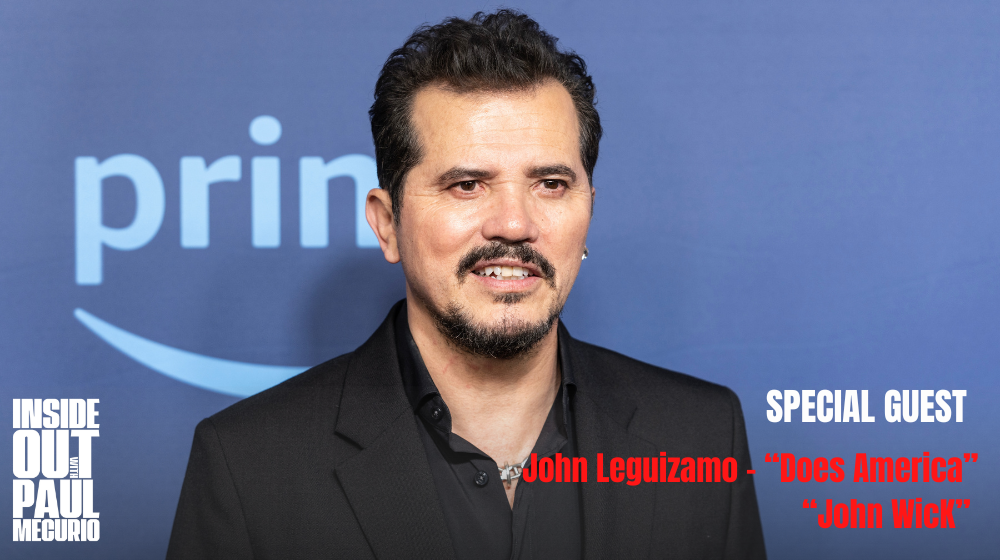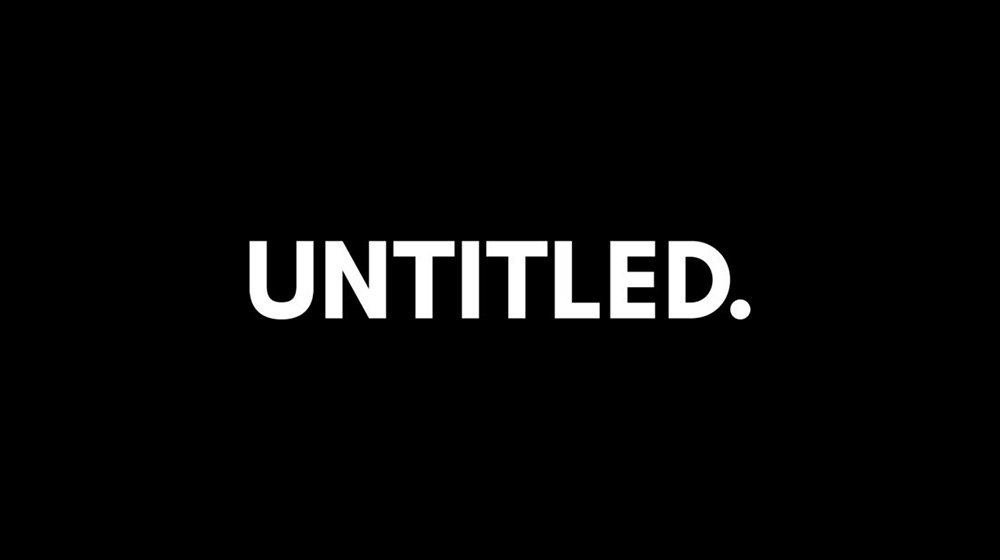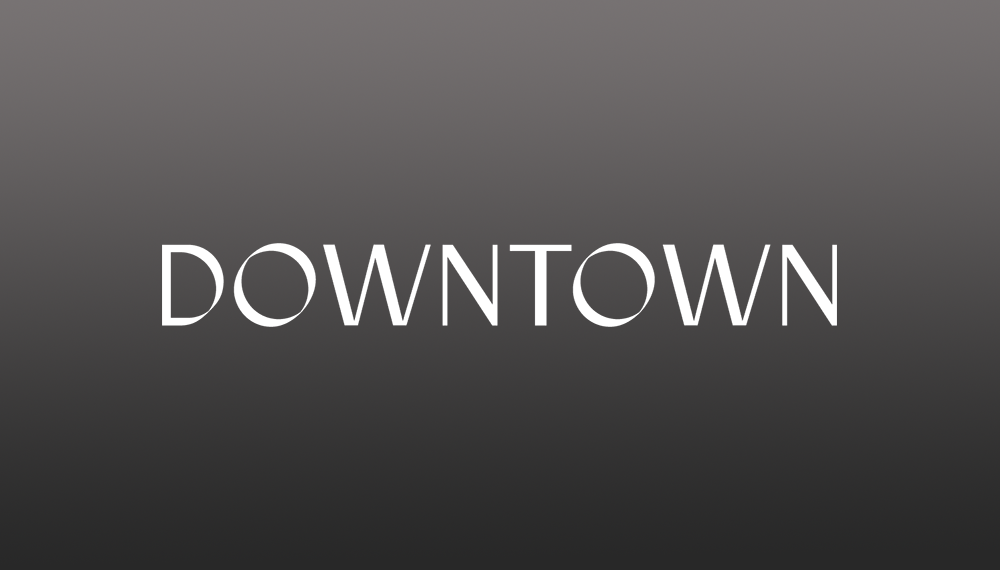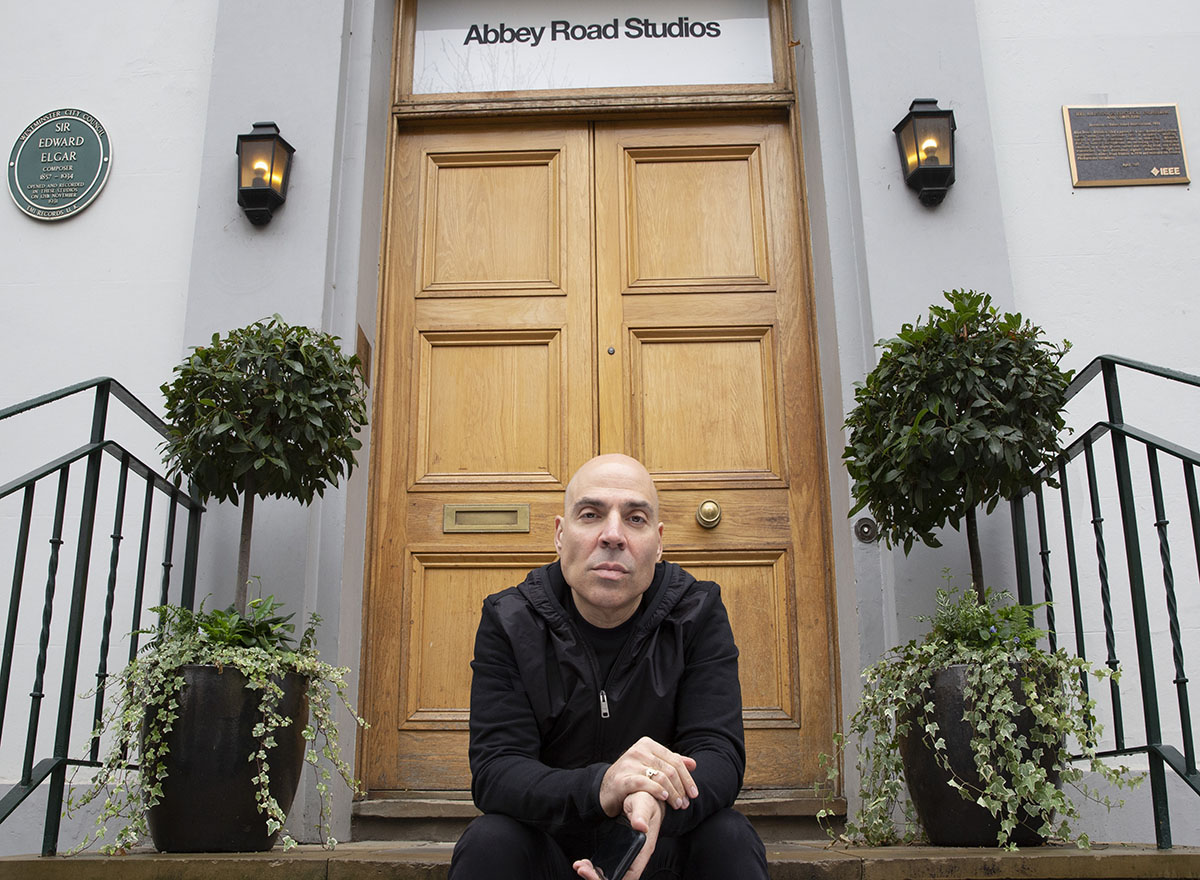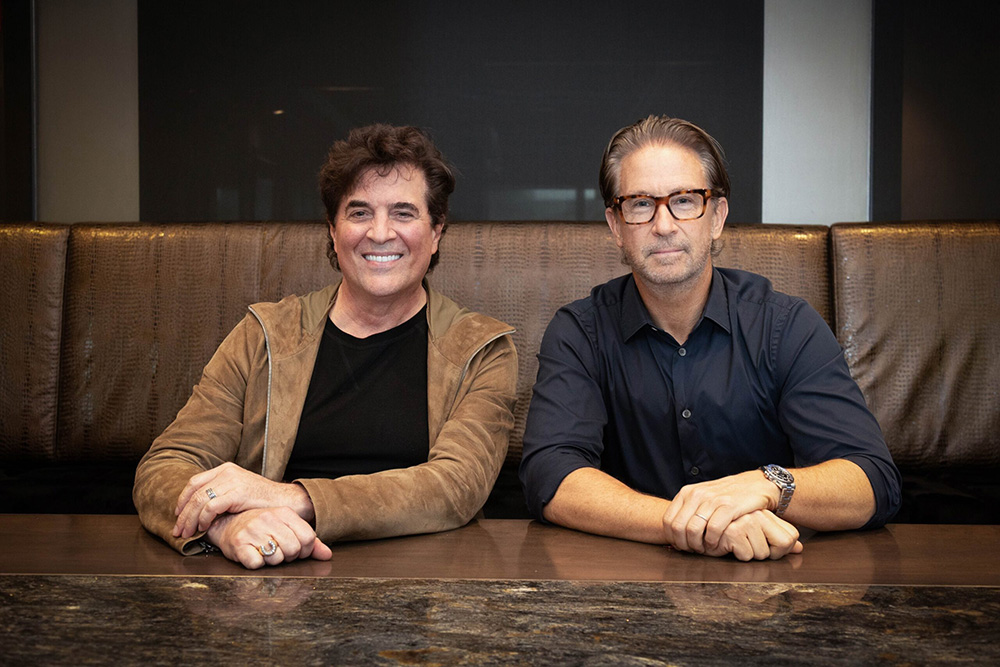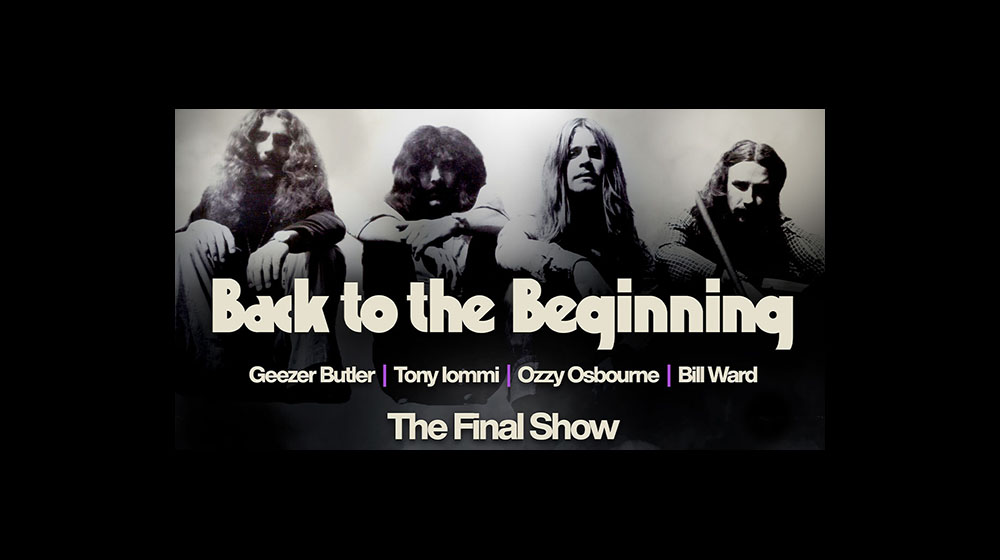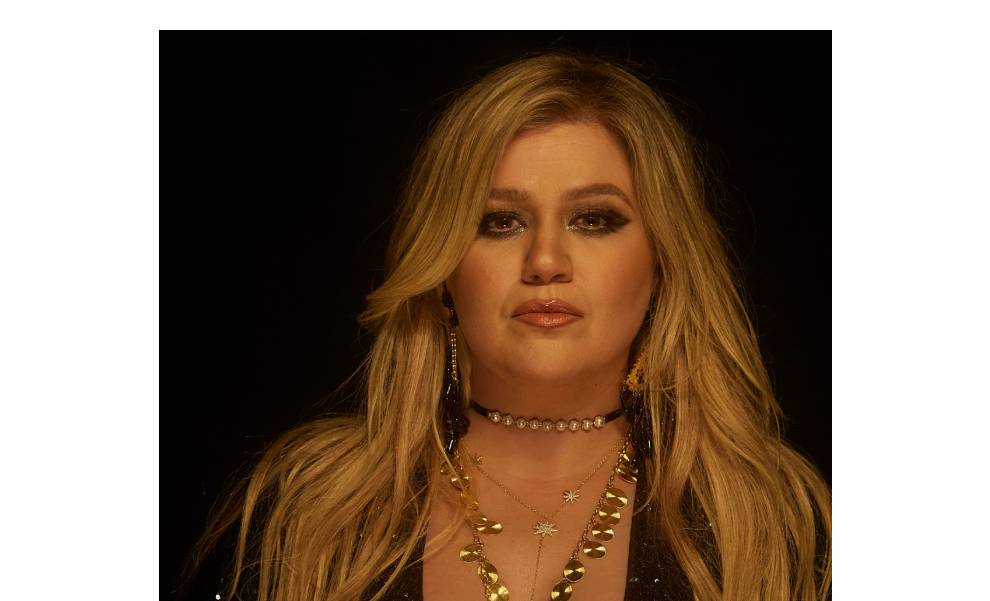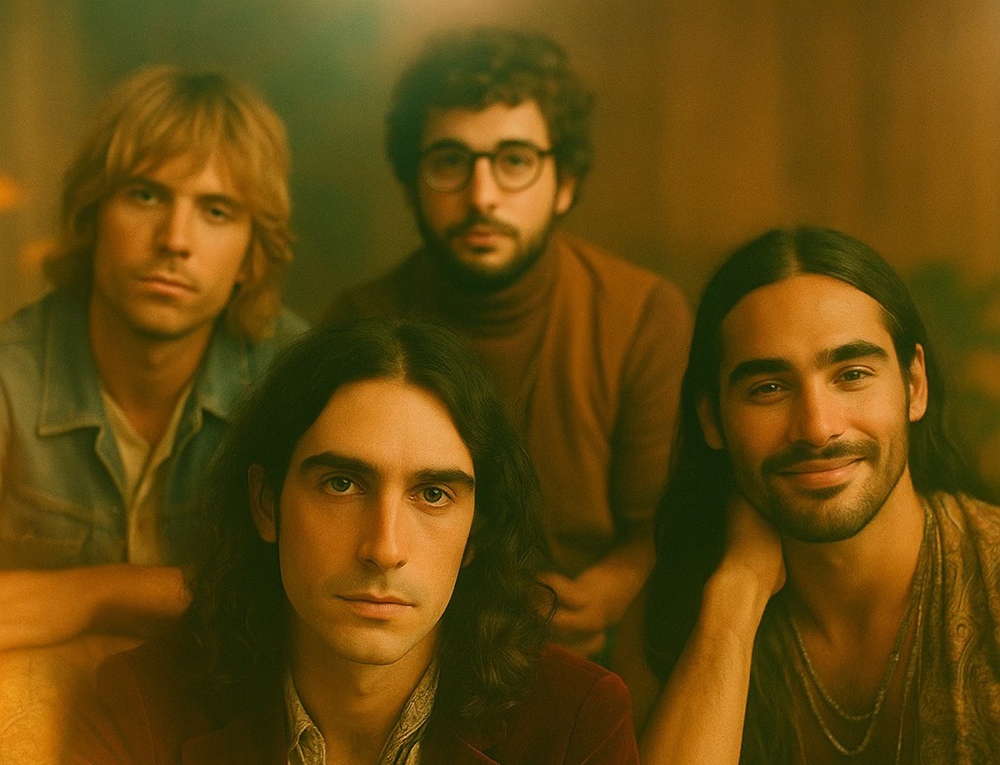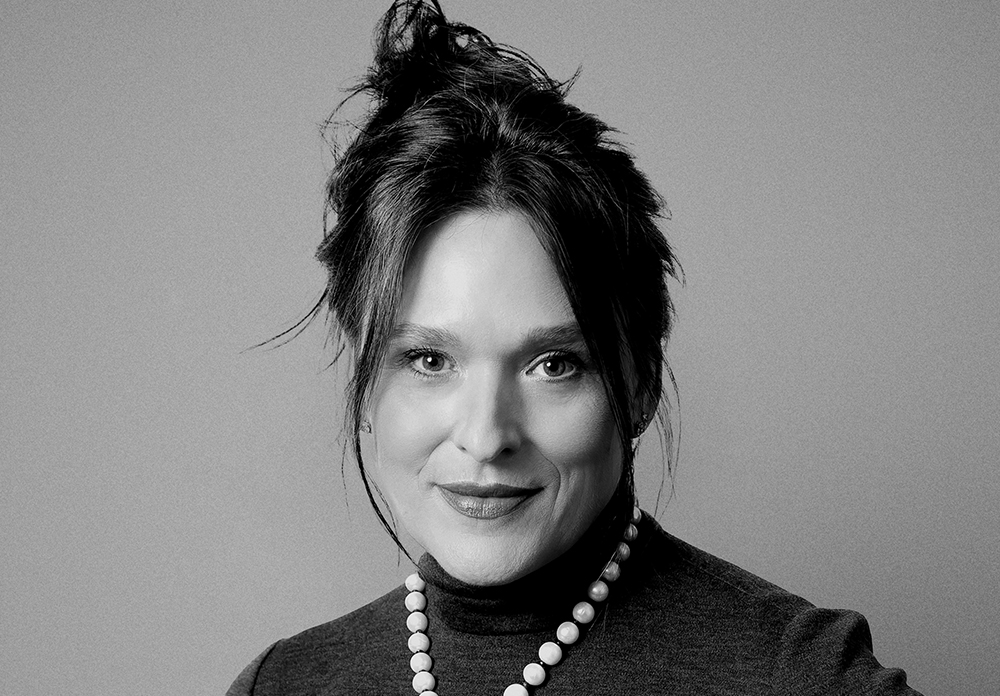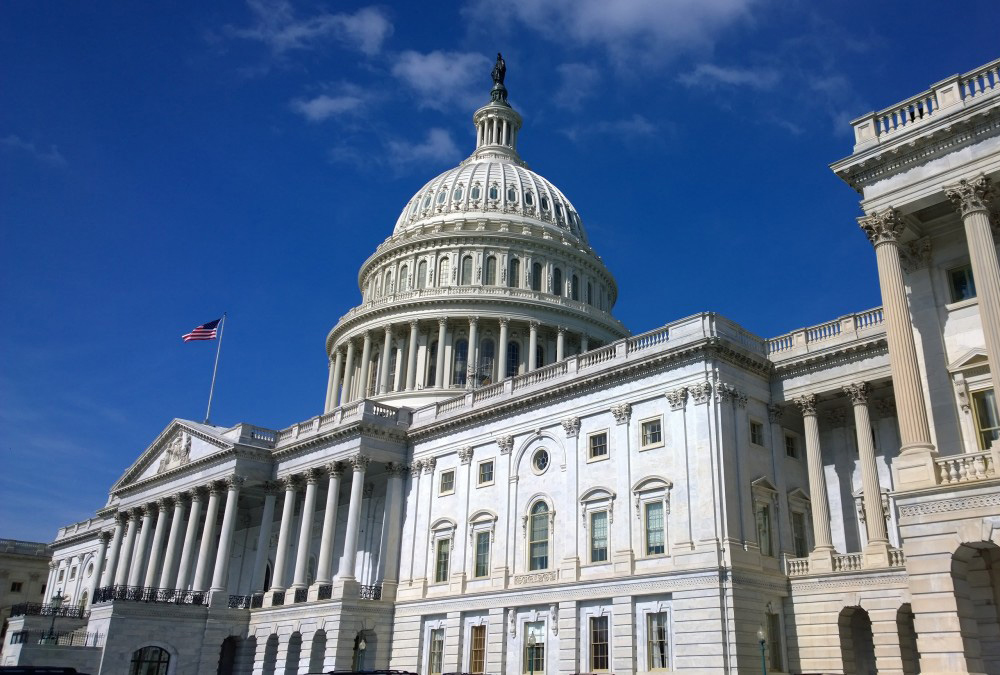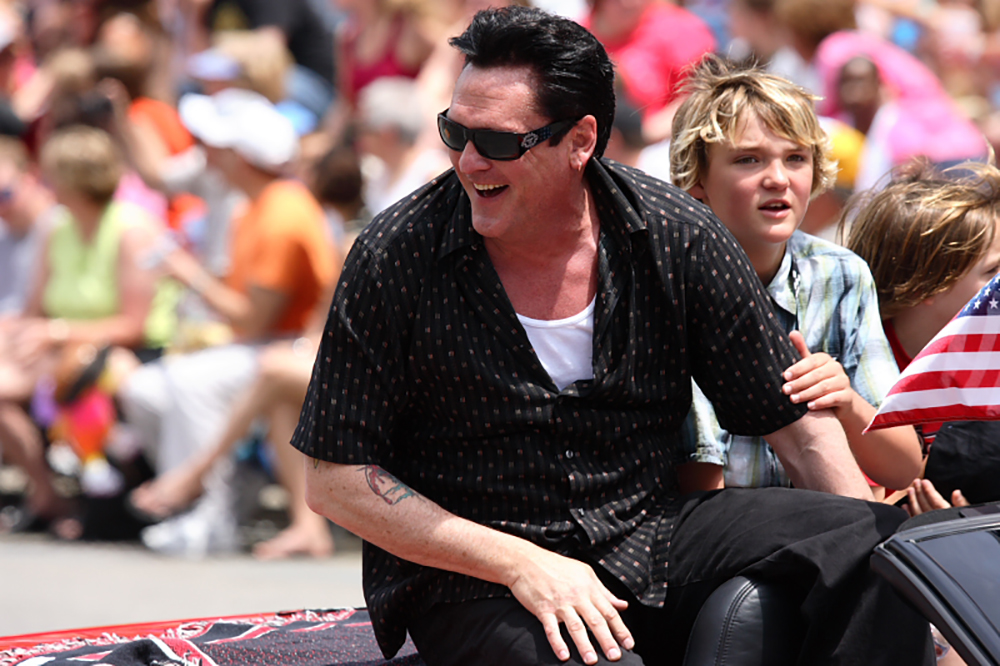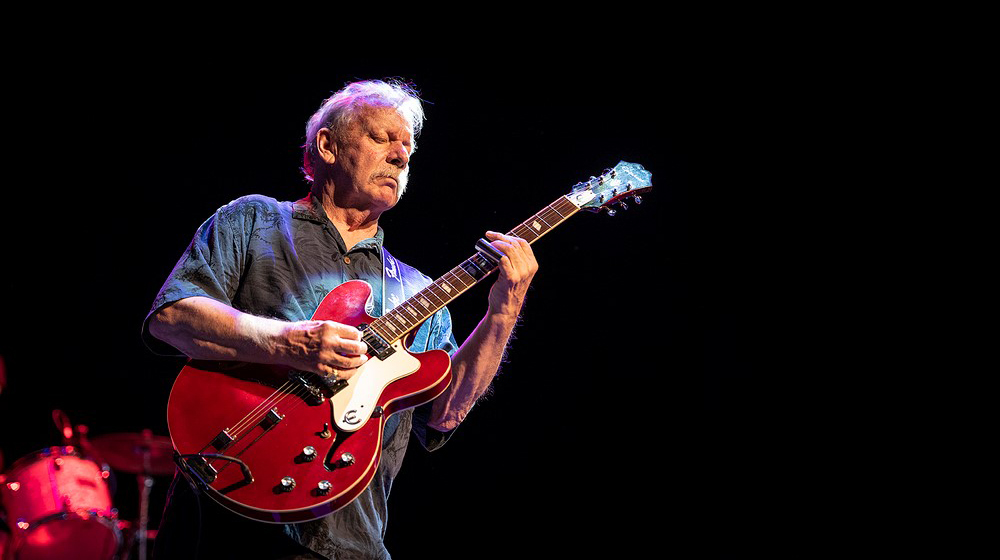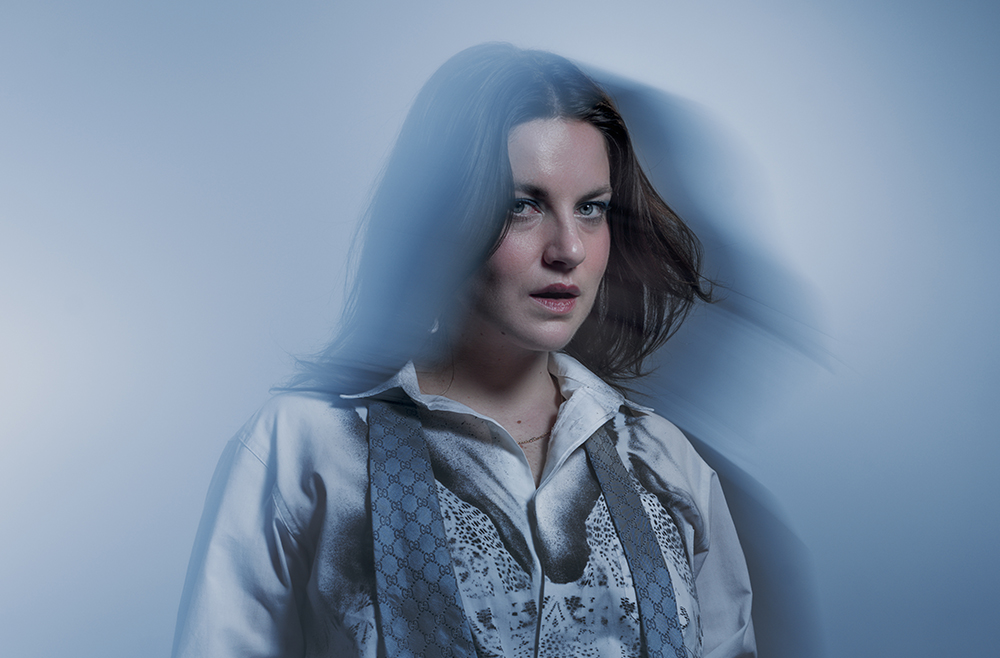This week In the Hot Seat with Larry LeBlanc: Jonathan Shank, Executive Producer & Senior Manager, Red Light Management.
Keep the porch light on for Jonathan Shank over the next 18 months as he clocks long days on the highways of North America, moving from musical event to musical event.
Red Light’s dynamic senior manager/executive will be out on the asphalt highway jungle producing “Disney Junior Dance Party On Tour,” a “Power Rangers Live” tour, and overseeing the continuing, mega-successful “Peppa Pig Live” touring juggernaut.
With a 5-person team based in Los Angeles, Shank also manages MAGIC!, Victoria Justice, Sam Tsui, and Danish singer Benjamin Lasnier.
“Disney Junior Dance Party On Tour,” hosted by Disney Junior’s Dee and Jay and the DJ Dance squad, is tapped to be the premier family concert event of 2018.
Mickey Mouse says so.
The 50 show national run launches March 14th in Southern California at the Thousand Oaks Civic Arts Plaza and will make stops at top venues including Rosemont Theatre (May 5) outside of Chicago; The Fox Theatre (March 24) in Atlanta; Count Basie Theatre (April 13) in Red Bank, New Jersey; Peabody Opera House in St. Louis (May 10), and The Grand Ole Opry in Nashville (March 28).
Shank joined Coran Capshaw’s Red Light Management in 2010. Red Light represents some 300 artists and has offices in Charlottesville, Atlanta, Nashville, Seattle, New York, and Los Angeles in the United States, and in London and Bristol in England.
Prior to joining Red Light, Shank was an artist manager at Azoff, Geary, Paul Management, a division of Front Line Management Group, where he handled a roster that included the Imagination Movers, Eve, Jerry Hannan and DJ/Producer Paul Oakenfold.
Over the years Shank has worked in executive positions at American Artists, Avenue Management, and Direct Management Group. He has managed War, Particle, the Disco Biscuits, as well as former Grateful Dead members Mickey Hart, and Bill Kreutzmann, including putting together such off-shoot groups as Hydra, the Rhythm Devils, and the Mickey Hart Band.
“Disney Junior Dance Party On Tour,” which kicks off in mid-March with 50 shows, is a music-driven immersive concert experience that will feel more like a concert than a theatrical kids show?
Yes.
How wonderful for you to be working with Amy Tinkham, the renowned director, producer, and writer of theater, dance, film, television, video, and art installations.
Amy is the highest caliber of creative directors that exists in this industry. She is a true creative force. She has a real understanding of how to assess a production, and how to scale it, and bring it to life. It is an honor to work with someone as creative as she is.
Does working with an organization like cable network Disney Junior up your game even further?
This is my first Disney production. Yeah, I would say that everything…It (Disney) is certainly the crown jewel of family entertainment. When I think about the type of value that we want to be able to deliver for these families, for these parents and children, I certainly think about it. Everything has to be beyond first class across the board. I would say having the opportunity to work with Disney on a production like this, it gives you a really wide open canvas to be able to paint on.
Like driving a Rolls-Royce.
Any form of representing Mickey and Minnie Mouse feels like the highest level of working in the family entertainment world. It is the highest level of entertainment. You want these characters to be embraced by generations to come and, obviously, this is one of the most popular franchises, and set of characters in the world. So yes, there is a feeling of stepping into a Rolls-Roll when you are representing characters on that level. You also want to raise your own level of skill, and production etc. to bring it all to life. To make it magnificent. To bring the magic. Disney is all about creating magic, and one of our main goals with this show is exactly that. Delivering the magic to the family.
You are also overseeing an extensive year-long Power Rangers Live tour in 2018 in celebration of Saban’s Power Rangers’ 25th Anniversary.
The Rangers’ tour is delayed due to production. So we are probably going to be putting that out later in the year.
And you are thinking, “Oh thank, God” due to your Disney commitment. You may have had two worlds colliding.
(Laughing) I need to invest in the cloning business. Anything that touches the Disney franchise or brand is elevated, I would say, to a certain level that is very difficult for a brand to even touch because of their footprint. When something is a priority for a franchise, there is very little that can stop the momentum.
This is your first time working with Saban’s Power Rangers as well?
Yes.
You are stepping back into your childhood viewing of Saturday morning kid’s show.
That’s right. Exactly.
“Peppa Pig Live!” tour continues doing outstanding box office. The Peppa Pig series has been around since 2004, and leads the list of what young children look for on social media.
“Peppa Pig Live!” Is such a charming show. The metrics are really insane on Peppa, and I‘m really proud of the success of this tour. We are just about to be rounding half a million tickets on Peppa and about $20 plus million at the box office. It’s just a train rolling down the track.
For decades live family entertainment in North America was an annual and erratic run of circus and skating productions, Disney fare, and shows by children’s musical artists like Raffi. Then Michael Cohl’s S2BN Entertainment had successful tours of “Yo Gabba Gabba!” which was followed by successful tours of family entertainment shows like “Super WHY!,” and “The Doodlebops Live.” But this isn’t a crowded field, isn’t it?
That is a great question. It is not as crowded as the contemporary music space, but there are more people that are trying their hand at it now than were five years ago.
The various Nickelodeon and Disney channels are obviously launch pads for live entertainment franchises. There may be more people trying to do productions on this scale, but it can be like losing on a Broadway show run.
That’s right. I think that part of it is that producing one of these shows is not as, dare I use the word sexy, as representing a Top 40 act. It’s also not rooted in a traditional model of releasing music, then touring, and figuring out some kind of marketing strategy or album cycle strategy. It very much exists closer to what I would call the jam band model of touring volume. Strategic touring in volume.
Working in this genre is akin to the ‘50s and ‘60s when older American booking agents would denigrate those younger agents booking the new rock & roll acts. Those established agents were most attracted to Broadway and middle-of-the-road type acts. Sometimes the live music industry is too hip for its own good. You say to a young manager or agent, “You can either go out with the leading rap, hip hop or pop act or you go out with a kid’s tour.” What tour do you think they are going to pick? “I’ll pass on the kid’s tour.”
(Laughing) I’m going to use that one. I’m tucking that one away. If I need to send you a royalty check let me know.
Do you feel a bit like an evangelist producing live family entertainment?
You certainly do have to educate people. Yeah, you are an evangelist except for the parents of young children. Often I find that we will throw a line up with dealing with “Disney Junior” when we were initially talking to people about it. There are certain promoters who will say, “Well okay, it’s Disney, I’m in.” Then there are certain promoters who will say that they have children, and this checks out. Then there are ones who say “Let me get back to you.” And they’ll go (and talk) to their brothers, sisters or friends who have kids are in the demo, and then come back and say, “Okay this checks out. I’m putting in an offer.” I would say more so than traditional artist development that there is an education and awareness curve with family entertainment that is very steep.
Do you have children yourself?
I have two boys, 11 and one almost 8.
You cited working with a jam band model. Explain that to me.
I think that there are so many threads to that model. You mentioned Michael Cohl, and the person who was really running point on “Yo Gabba Gabba!” was Michael Luba who came from the String Cheese Incident world. Here he was producing one of the biggest pre-school family entertainment shows with what I would argue was not too different from a routing model that he would use for String Cheese.
[The TV show “Yo Gabba Gabba!,” was conceived by Scott Schultz and Christian Jacobs (aka MC Bat Commander of Huntington Beach-based superhero-themed band the Aquabats). The touring show has rock show production values, and a substantial video element.]
It was either Mike Luba or Michael Cohl’s nephew Paddy Scace who introduced him to the children’s TV show “Yo Gabba Gabba!” that led to “Yo Gabba Gabba! Live.” It certainly was Mike Luba who came in, and said to Cohl, “Why don’t we try this?”
[Michael Cohl, interviewed “In The Hot Seat” (March 6, 2013), said: “I had already left Live Nation. I had a non-compete in music, except for certain groups. I wasn’t ready to go and lie on the beach. I was focusing on what we will call broader demographics—some people call it family shows—I like to call it broader demographics. Luba and Paddy, they are two of my young guns that I was trying to build my company in a whole different vein.”
I will tell you an interesting story. The very first family entertainment property I was interested in producing was “Yo Gabba Gabba!.” At the time I was working for Irving (Azoff). I pitched “Yo Gabba Gabba!” all the way up the chain (at Azoff, Geary, Paul Management). We put together the first marketing plan and made a proposal. Ultimately, we didn’t get the business, but that was the first rendering of the model that I am currently operating under when we approached “Yo Gabba Gabba!,” and I’ve tried since to produce that model. That model further morphed, and ultimately became the model that we are currently using for “Peppa Pig Live!” and “Disney Junior Dance Party On Tour.” It’s interesting how all of that evolved. I was crushed when we didn’t get “Yo Gabba” because I had thought, “Man, this is going to be the biggest thing.” And it was. It was huge.
When he was approached with “Yo Gabba Gabba!” Michael Cohl had no idea of what the show was.
Neither did Irving (Azoff) when I told him about it. I’ll tell you a funny story along the same lines. I was in Nashville a couple of years ago hanging out with Coran (Capshaw). He was asking, “What’s going on? What’s happening?” So I said “I have this music theatrical thing. We are going over to the UK. It’s going to be big. It’s called Peppa Pig.” He kind of cocked his head, and looked at me, “Peppa Pig. What is that?” So I told him a little bit about it. He shook his head and he said, “Well, do you think it’s going to sell tickets? And I said, “Hell, yes. I think it’s going to sell tickets.” He then said, “Sounds great.”
Prior to working at AGP Management, you had worked at several other agencies.
Yeah, I was a booking agent at American Artists for a few years and I was handling the Marshall Tucker Band…
And Dave Mason and Jefferson Starship.
Then I moved to Avenue Management, and I was managing War and that’s where I started managing Particle. I also worked with LFO, and Isaac Hayes, and a few other cool artists. Then I moved to Direct Management Group with Steve Jensen. I learned a tremendous amount from Steve on the touring side.
Did Steve have k.d. lang that that point?
Steve did have k.d. lang at that point. I remember having dinner with Steve and Tracy Chapman right after the first Bonnaroo(in 2002) and spending the entire evening trying to explain to Tracy what this gathering was in the middle of Tennessee and why it was important for her to perform there. She was looking at me saying, “And there were 70,000 people?”
Steve is known for being helpful to young agents and managers.
Yes. I got lucky.
Irving Azoff also can be generous with those staff members working with him.
He was super helpful. I feel lucky to have come into these peoples’ orbit. I look at it like a blessing. Coran, I met for the first time over 15 years ago. I remember him inviting me up to his house. Particle was playing in Charlottesville in the early 2000s and I was begging him to open an L.A. office at that point. He has been just an incredible supporter, and honestly, not only one of the most loyal people I’ve met in the industry, but one of the most loyal people that I have met in my life.
Were you doing family entertainment before you joined Red Light Management in 2010?
Just the approach on “Yo Gabba Gabba!” which happened while I was at AGP. I had not produced any family shows prior to that.
Why did you decide to join Red Light in 2010?
I always felt that Red Light was a place where I wanted to be. It was just a matter of time. Front line had just been purchased by Live Nation. So we collectively knew that there were going to be a lot of changes there. So I facilitated a move from AGP/Front Line to Red Light. Literally, there’s wasn’t one crossover day. I finished my job one Friday at Front Line, and then on Monday, I moved into Red Light.
What clients did you have at AGP?
I had Eve, and I had started managing this Disney group the Imagination Movers. And I had Jerry Hannan who I loved. He is just an incredible writer. But my thought was that I had come from the live improvisational jam band space but I realize that Red Light didn’t have a family entertainment or a pop space really. So I figured that this would be a good opportunity to try to occupy that space here within Red Light.
But you didn’t come to Red Light with all of this worked out. Still, with Red Light, you realized with it being in management, production, and promoting, what you are doing could employ all of Red Light’s assets.
Thinking on that now, it seems hard to believe that it was just a notion that we would just build this division, but I am certainly proud of the work, and the great team (of five) here which has really been incredibly supportive. Chaz Hamman has been with me here since day one, and he has grown. He started out as my assistant, and he’s now in charge of a lot of our productions.
With any event, you can look at the different parts of Red Light and pick people to make the production happen. You can have your own in-house Amy Tinkham at some point. You have that ability within Red Light.
Absolutely. Yes, and the idea is to continue to scale. I will give you what I will say is a microcosm of what you are talking about is that over the past couple of years I have been producing a couple of charity concerts. One for Ray Manzarek (for Stand Up To Cancer), and then with Linda Ronstadt last year for the Michael J. Fox Foundation for Parkinson’s Research. I’m doing one (“An Evening of Respect” at New York’s Apollo Theatre being also produced by JAM, Inc., and being promoted by CEG Presents) for the Grammy Week on January 25th for The Otis Redding Foundation. We have the Dap-Kings as the house band and Whoopi Goldberg as the host. These events have been a great opportunity for me to reach into Red Light. I can invite some of our artists to be part of these events. We are blessed in that we have artists from all different genres. For example, for this Otis Redding event. it’s great to be able to ask people like the Preservation Hall Jazz Band, Chris Stapleton, and so many of our marquee artists if they want to take part. So I would say that is a microcosm of what you were getting at and then, yeah, the idea is that we just continue to scale so we are able to provide these services on a larger level both to Red Light artists and to other projects and shows.
Providing family entertainment in North America dates back to the arena touring circuits of the ‘50s and ‘60s developed by music promoter Irvin Feld, who managed Paul Anka, and oversaw the touring, and then owned, the Ringling Circus But, in truth, arenas are really crappy places to take young kids.
That’s right.
Theatres are more suited for shows for younger children.
Hundred percent. I couldn’t agree more. It is one of the tent-poles of our model and one we have stuck with since we started producing these shows. The model that we employ is largely that families are going to have a better experience in theatres than they will in arenas. I find that in an arena you are so far away from the action. If it’s a little kid by a third of the way into the show they are looking at the light up toy that they bought or sucking on the seat in front of them. When you bring it (the show) into a theatre it is a much more intimate experience. Everybody feels that they are part of the interactivity of the show. I think that part of the success of our family entertainment model is that we try to present these shows in places where people want to bring their families.
Peter Shapiro, owner and founder of the Brooklyn Bowl, and I recently discussed how the Grateful Dead pioneered a lot of standards that evolved in live music including in merchandising, marketing ticketing and live music archives for fans. Do you agree that Grateful Dead made structural changes that became elemental to the touring business?
One hundred percent and you can add one more category to your list which is social media. Also the Grateful Dead, in my opinion, spawned the next generation of music business leaders. There is certainly a camaraderie amongst a lot of us who were studying the (Dead) model, and engaging in the community. We were learning about things like routing just by osmosis of knowing the set list of the (Dead) tours and physically following their tours. We didn’t even realize the skill sets that we may have been picking up. To my earlier point about social media, I have this theory that the Grateful Dead helped really spawn social media through their tape trading community.
Peter and I touched upon that as well. Instead of a recording industry intent on suing music fans, the Grateful Dead invited their fans at show into a segregated section in order for them to tape while the record industry was saying, “We are going to sue you if you download music.”
Yep, and meanwhile (the Dead) was allowing a multi-generation and a community of people to connect before there even was Email. I really think that if you take that trail down further you’ll see that there’s not much of a coincidence between Silicon Valley being not too much distance to where Jerry Garcia grew up (in Menlo Park, California). I don’t find that too much of a coincidence.
After Jerry’s death in 1995, a new band form with sub-genres developed. The jam scene reflected that there were people who appreciated free-form music. There had been a gap.
A massive gap and also just going back a moment to what we were talking about spawning the next generation of music business leaders. You know that gang is what really allowed us all to get to know one another because we would go to a lot of these events and conferences and talk about that void at that time. I started managing Particle, and then the Disco Biscuits. There were all of these kinds of sub-genres. There was funktronic. There was bluegrass. I always think back to how amazing it was that initial Bonnaroo (in 2002) sold out in two weeks without any advertising. It was 70,000 tickets with Trey Anastasio and Wide Spread Panic as the headliners. Now they are massive headliners, and promoters are probably spending a lot more money to achieve those (audience) marks.
[At the inaugural Bonnaroo in Manchester, Tennessee in 2002, Particle went onstage at around 4 A.M. and played until sunrise to a huge audience. At one point, there were musicians lined up to sit in resulting in a superjam of sorts.]
Since Disco Biscuits often performed at the Wetlands Preserve in Manhattan, you’d know Peter well. As a 23-year-old, he had purchased the club in 1996, and turned it into a late-night paradise for jam bands, ska acts, and social activism.
Peter and I know each other very well. One funny story is from when he was producing the Jammies (the Jammy Awards), and I was managing Mickey Hart and Bill Kreutzmann in 2006. Peter did the Green Apple Music Festival (produced in partnership with the Earth Day Network) which was a curated event in all of these (35) different venues in New York City which went beyond the artists that were on the Jammies. We did the Super Jam near Grand Central Terminal, and Mickey had invited his friend (CBS-TV newsman) Walter Cronkite to come to the event. Walter came and he said to me that he wanted to get up onstage and play a bass drum. So Mickey set a bass drum up for him. Walter played and afterward he said to Peter and I that he needed to get back to his place. So Peter and I walked Walter Cronkite down the street in New York City. I have a photo of us with Peter and I standing in the background, and we both look like Secret Service men.
Today, heritage acts like Jimi Hendrix, Otis Redding, Janis Joplin, Nirvana, Grateful Dead, the Doors, and the Ramones remain as big as they were at the height of their careers. Furthermore, with the internet and social media, their popularity is now truly worldwide. People like your friend Jeffrey Jampol (president of Jampol Artist Management) have found that life after death can be profitable as he oversees the estates of the Doors, Jim Morrison, Janis Joplin, Muddy Waters, Otis Redding, and others.
Absolutely. These artists have become brands, and these brands have been inserted into pop culture and immortalized in a larger than life way that is impossible to encapsulate.
Decades ago the commercial potential was limited to T-shirts emblazoned with James Dean and Marilyn Monroe images.
That’s exactly right. I think that Jeff has done an amazing job furthering these legacies and understanding how to further inject these artists into pop culture and keep them relevant because that is really what is all about and that I think speaks to your point why they are more omnipresent now than they were before.
The music of these iconic acts has been used in countless TV shows and films for decades, but it was the live theatrical productions, including “Beatlemania,” “Rain,” “Let It Be,” “Backbeat” and “The Beatles LOVE,” highlighting music by the Beatles, that provided the current theatrical template of contemporary-based music productions. That template wasn’t as available 30 years ago. Who could ever imagined a musical spotlighting music by Green Day in “American Idiot” in 2010?
Absolutely not. There are so many more what I would call ancillary revenue streams that are available now to artists whether it’s estates or artists. Legacies. Certainly, something that has developed in the last few decades.
Managing Particle led to you managing Mickey Hart?
Hundred percent. I’ll start to connect the dots. I had been staying at Mickey’s house, and working on some projects. One morning I came down from the guest house, and I got called into the main house. Mickey wanted me to come down and say good morning or whatever. I was thinking, “Oh man, maybe, I am in trouble. What did I do?” So I came into the house, and they said “You are doing such a great job with our stuff. We just want to know if you would be interested in managing Mickey.” I was kind of waiting for the camera to come out or something.
What had you been doing for Mickey up to that point?
I had been managing Particle, and we had created (electronic/jam-rock band) Hydra the year before in 2005 with Mickey and Particle.
Choosing to work so closely with someone so intent on exploring the outer reaches of American popular music while he was also working on his own solo and charity projects would have been daunting.
Well, there are a lot of dots to be connected here which brings us all the way to the current time which is that I was managing Mickey; and anyone who is involved in Mickey’s world knows that he is a very charitable, philanthropic person. He has done things for music conservation, and for various global communities, and he is a musicologist. Some of these causes have led him to some very important relationships. So we did events for the Gyuoto Monks, and we did an event for Nancy Pelosi and we did a few things for Walter Cronkite. And we did Vibes For Peace for the Rex Foundation. We put together the Rhythm Devils, and the Mickey Hart Band.
Explain how you came to oversee the Nancy Pelosi Inaugural at the National Building Museum in Washington, D.C. on Jan. 7, 2007.
Mickey called one day, and said, “Nancy Pelosi is being inaugurated in January. She wants us to help put the event together. So you are on.” I said, “Okay who do I need to call?” This is exactly how it happened. We started to get on the phone. “Okay, we need a house band.” So I went up to Mickey’s house in Sebastopol and we sat down, and figured out who we were going to invite to play in the house band. Mickey astutely called it Your House Band which was a play on words on the fact that it was now going to be Nancy’s House of Representatives. The house band that night was—with my mind, I might be wrong—but I think it featured (Bob) Weir, and Mickey, (Bill) Kreutzmann, Warren Haynes on guitar, Bruce Hornsby, and (founding Phish member) Mike Gordan on bass. I do not believe that configuration of the band ever played any other shows. The other artists that night were Tony Bennett, Carole King, and Wyclef Jean. A unique thing about that show was Wyclef played with the band on “Iko Iko.” I believe that is the only time that he collaborated with members of the Dead. So that was a really special night. Something that I am never going to forget for sure. I have seen Nancy Pelosi a few times since then and always have a little laugh about that evening.
[Although Jonathan didn’t mention it, he possesses the only recording from the Nancy Pelosi Inaugural. At the last moment, he sent out for a hard drive and his road crew grabbed a feed from the soundboard. Brad Serling, founder/CEO of nugs.net, later transferred it for posterity.]
It was Mickey’s wife Caryl, the children’s writer, who suggested that you become a producer. Jumping from being a manager to a producer of events can be a considerable learning curve.
I would say that I was a little apprehensive, but I didn’t realize that I was already doing it, and not acknowledging what I was doing, was producing shows. A good portion of the scope of work with Mickey was putting together and producing a lot of days events and beyond that, it was putting together a band.
Well, there’s a saying that if someone gives you an opportunity and you aren’t sure you can do it, go ahead and do it because then you will know how to do it.
I had gone back up to Mickey’s to work on some studio work with some DJs. It was at the beginning of 2006. Right around the time when we had the idea of putting the Rhythm Devils back together with Kreutzmann. So we had been up there for a few days doing stuff in the studio. I had brought these DJs up. We were working on these loops with a lot of Mickey’s rainforest sounds, and some samples recorded on the beam etc. Just experimenting to see what might work. We were onto some pretty cool stuff. It was at that point in the morning that I was supposed to drive down from Sebastopol to L.A. and they said, “Well, what do you think about this?” It was a couple of years after the Mickey Hart Band, the Global Drum Project, the Rhythm Devils, and Vibes For Peace and all of this stuff, but I remember it like it was yesterday.
Caryl said to me, “You are a really good manager, but I think that you are a really good producer too.” It’s like that moment in “Back To The Future” in the diner that they suggest to (busboy) Goldie Wilson that he could be mayor in the future, and he goes, “Mayor. Now that’s a good idea. I could run for mayor…Mayor Goldie Wilson. I like the sound of that.” That was sort of my reaction. “Hmm, I’m going to be a producer.” I remember the entire ride back from Sebastopol to L.A. just thinking, “Time to make the donuts.”
Where are you from ?
Philadelphia.
How did you come to start attending Tulane University in New Orleans in 1993?
I had an affinity for live music, and I was curious.
And there was a girl involved?
Not yet. There would be eventually.
New Orleans is one of the greatest cities in the world.
Amazing. It changed the path of my life for sure and opened my eyes to all different kinds of culture, music, food, and community. What a unique experience. Also whenever Bob Dylan would come into Louisiana I would drive to wherever he was. I went to Shreveport, and to Thibodaux. Dylan was still in decent form at that time.
You interned with Kim Fowley who lived in New Orleans from 1997 to 2003.
God bless him. I wouldn’t be here without him.
I recall a profile of Kim then in OffBeat magazine [“Kim Fowley: A Strange Dog In The Barnyard Of Humanity” with Bunny Matthews, March 2000 issue] in which Kim boasted about his accomplishments: “I’m in 15 rock ‘n’ roll encyclopedias, I’ve sold 102 million records—56 gold, 26 platinum. I’ve sold more records than Allen Toussaint, Trent Reznor and Daniel Lanois combined.”
You met Kim while attending Tulane University?
Yes, I was at Tulane. I had finished an internship at the House of Blues. I was one of the first interns at House of Blues which had just opened up in New Orleans. I showed up at the front door and I said, “I want to be here.” Being there meant hanging fliers in the bathroom, and on telephone poles around town. That was a perfect experience. After that ran its course, I went into the music department at Tulane. I was begging trying to get some credits for an internship. They said, “Fine if you can find somebody who works in the music industry, then we will give you some credits.”
What had you been studying?
Sociology. There wasn’t a music business program at Tulane, and the music program there basically meant that you were playing jazz. I heard about these attorneys who had an office in downtown New Orleans that were working on some music law. So I decided to give them a ring. They said, “You don’t want to intern for us. You want to intern for this guy who is here. He’s just moved here, and he’s doing A&R for a record label that he’s just opened.” I was like, “Okay I’ll meet him.” That guy was Kim.
Until now I had no idea that Kim had lived in New Orleans.
One of the things about spending time with Kim was that you got to know Kim. I would say looking back that this guy I’m not even sure now, but he took me in like I was a family member. This was in the pre-Email days. I remember when I was finishing college I invited him to my college graduation. I had my whole family come in, and we had a dinner set at Emeril’s. I said, “We are having dinner at Emeril’s. Can you come for dinner?” Kim showed up in his yellow canary suit, okay? I’m going, “This is the guy that I’ve worked with for the last six months.” By the end of the dinner, he and my family, especially my grandfather, really, really hit it off. For years to come, my grandfather, until he passed and Kim, would both ask about one another. That was just really special. He would always say, “Stay teenage.” Before I came to L.A. he gave me a stack of his business cards, and he signed them all on the back. He wrote, “Jonathan is great. Hire him.”
You now manage MAGIC! They must be close to finishing up a third album.
That’s right.
This is a band viewed as a one-hit wonder due to the track “Rude,” released in late 2013, reaching #1 in the U.S., and the UK, and peaking within the top ten of charts in Canada, Australia, New Zealand, Denmark, Sweden, and The Netherlands. How do you resurrect a band like that?
There is only one answer, and that is another hit songs. These guys are incredible songwriters. Part of the issue is that “Rude” was so big it eclipsed who they were as a band. My goal with them is to develop them as a true lifestyle touring band. I look at a lot of the bands that came out of the late ‘90s and early 2000s, that had a couple of hits, and they can still tour successfully because they built a core audience. “Rude” became so big that it didn’t allow them to build a core audience. It just allowed them to have a moment in time. Also, my goal has been since I started earlier this year has been to develop them as a live music attraction, and to prove to people that they put on a great show. What’s amazing to me is through that entire cycle with “Rude” and the through the first album is that they didn’t really gain exposure on major festivals.
Any further exposure afterward for them primarily came with collaborations including Shakira, David Guetta, and Sean Paul. When is the album dropping?
It comes in March on RCA., and we have a single called “Kiss Me” coming out in February.
Do you have a title yet?
“Expectations” at this point.
You also manage Victoria Justice, Sam Tsui, and Danish singer Benjamin Lasnier. How do you balance management and your family entertainment projects? A lot of your plate here.
Each one has its own bucket. That’s the easiest way to explain it. Obviously, anybody who has this kind of workload needs a tremendous amount of support, and also really great support. I am thankful to have that, and I think that the true balancing part is all in prioritization. That’s what I find. If you are trying to super-serve peoples’ needs and understand how and when to plug into their needs.
Have you ever seen anything like the past five years of the dramatic upheaval in the music industry brought about by the internet?
When we start to have these conversations about the amount of changes, yes it is absolutely unprecedented. The word playlist was not in our vernacular five years ago.
Managers have taken on many of the roles and duties that labels once had.
We had to.
Major labels cut staff and, with few exceptions, missed years of an opportunity to bulk sell music on the internet because of fears over the conversion of music to files.
Also, it started to feel like that even if you were an artist who was signed to a major that you were still fighting for prioritization.I think that the old adage was that once you were signed you were on your way. Now I feel that once you are signed it’s like going from a larger pool to a smaller pool, but you are still in the pool.
Even while signed by a label then, the question the Tuesday after the release of an album was, “What are your (sales) numbers?” It became like the film industry. If an act didn’t have impressive numbers, the label became disenchanted.
Yes. This is why every artist has to focus on building their core audience and come to understand the touring model and paradigm as it exists.
Today, you could manage a mediocre band, but if they had high social numbers, many labels would look at them.
Of course. One of these days soon, the glass ceiling is going to break for these influences. There will be a massive hit act that comes off one of these platforms whether it be YouTube or one of the other platforms, and that will be the next wave for us.
Look at the original content Netflix is now developing.
I would argue that music is one of the last verticals where the glass ceiling has not been broken. Look at fashion, beauty, media, and look at television, with Netflix and Amazon, etc. I would argue the labels are holding the keys to that in a certain sense, and it is really difficult for an artist to become credible coming off YouTube or some kind of content platform that is not a major label.
Larry LeBlanc is widely recognized as one of the leading music industry journalists in the world. Before joining CelebrityAccess in 2008 as senior editor, he was the Canadian bureau chief of Billboard from 1991-2007 and Canadian editor of Record World from 1970-80. He was also a co-founder of the late Canadian music trade, The Record. He has been quoted on music industry issues in hundreds of publications including Time, Forbes, and the London Times. He is co-author of the book “Music From Far And Wide.”




























